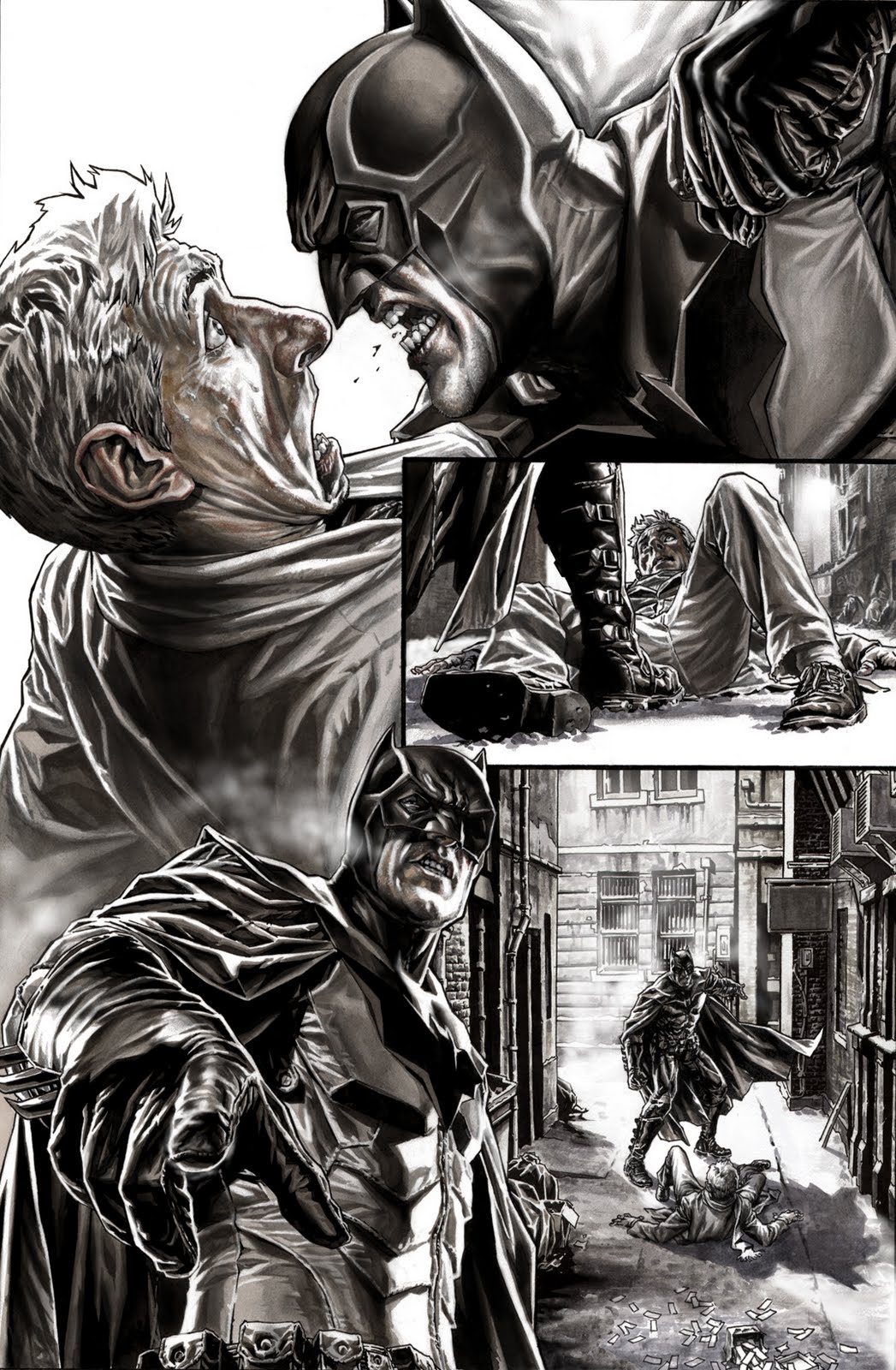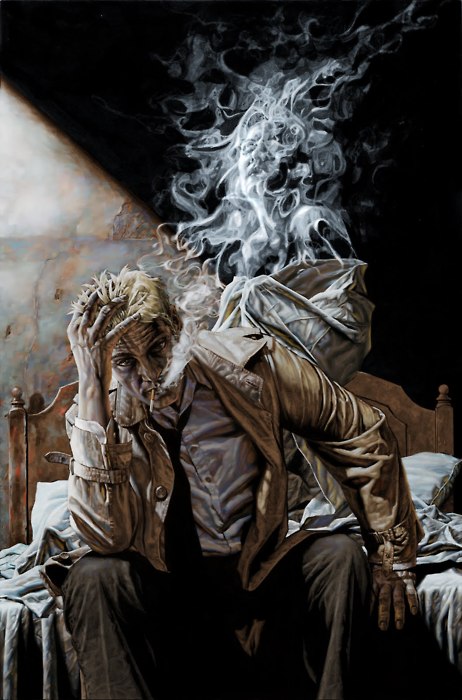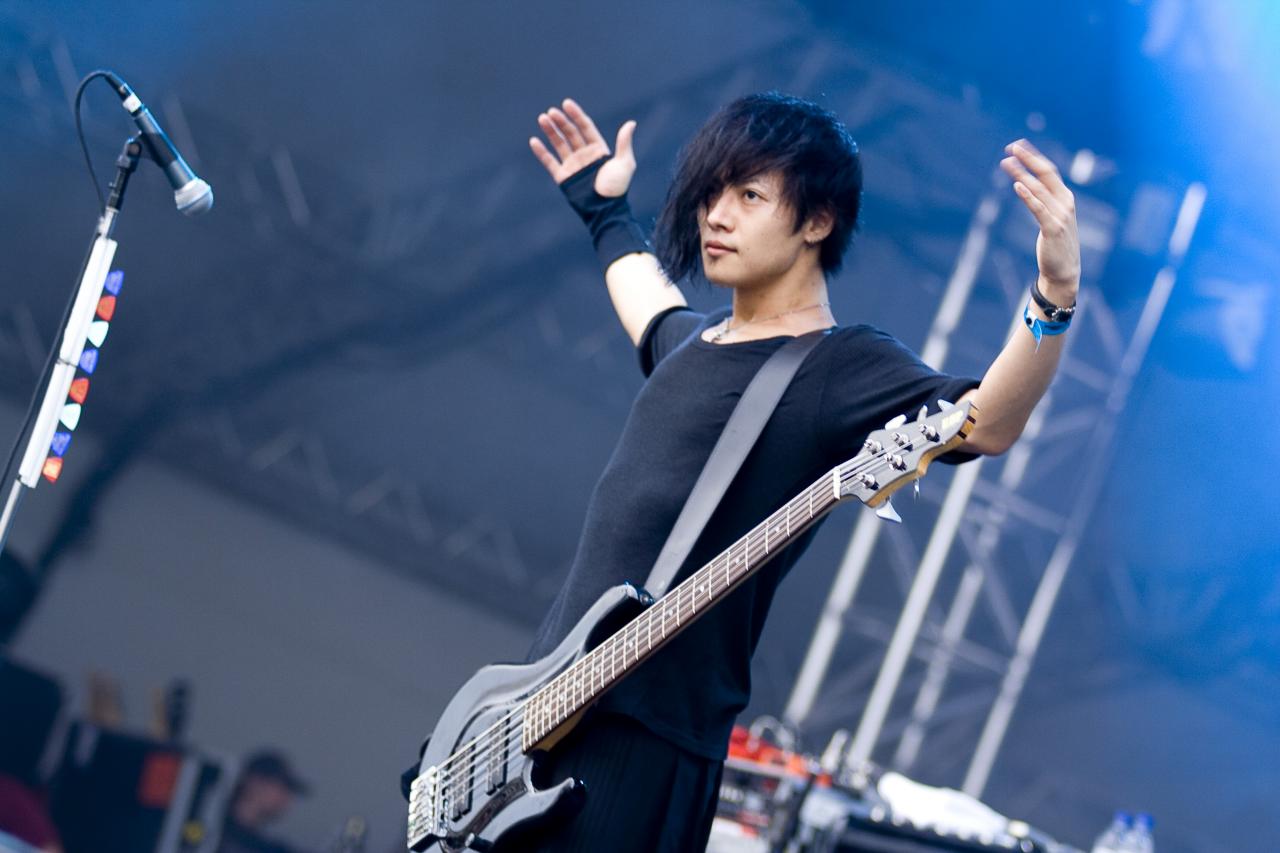DarkMedia Interviews Lee Bermejo:
Just in time for the holidays, DC Comics has released an incredible graphic novel based on Charles Dickens’ classic “A Christmas Carol” — staring The Dark Knight himself. With artwork so stunning and dynamic you’d almost swear it was alive, this is not your average adaptation on any level. Clever and fresh, while still remaining respectfully faithful to both Batman and Charles Dickens, Batman: Noël is a must read.
The man behind the bat is none other than Lee Bermejo, who many will remember for his artwork in New York Times best seller, “Joker”, written by Brian Azzarello. Pulling double duty as artist and author this time around, Bermejo has proven himself to be a formidable force in the comic industry. A rising star — and definitely one to watch.
DarkMedia had the pleasure of talking with Lee not only about Batman: Noël, but his work on Hellblazer, his best advice for aspiring artists, and how living in Italy, in the midst of so much classic art, has inspired his work.
Congratulations on the amazing work you did, both as a writer an an illustrator on Batman: Noel. Can you tell us a little about how the project came about? Is this something DC pitched to you, or was it a project you came up with on your own?
 The project came about by accident really. I was mulling over the possibility of two other different projects, one being an adaptation of a classic work of literature for a French publisher and the other being a Batman story that featured the character that would eventually become Bob in NOEL. As I was thinking about the two different ideas it started becoming clear to me that I could actually merge the stories into something that might be more interesting that they would have been individually. After that, the project took shape fairly quickly. The pieces just seemed to fall into place very easily and the challenge became how to do something that wasn’t overly cheesy yet still resonated in the same way the Dicken’s classic does.
The project came about by accident really. I was mulling over the possibility of two other different projects, one being an adaptation of a classic work of literature for a French publisher and the other being a Batman story that featured the character that would eventually become Bob in NOEL. As I was thinking about the two different ideas it started becoming clear to me that I could actually merge the stories into something that might be more interesting that they would have been individually. After that, the project took shape fairly quickly. The pieces just seemed to fall into place very easily and the challenge became how to do something that wasn’t overly cheesy yet still resonated in the same way the Dicken’s classic does.
What would you say Batman’s greatest strength is? His greatest weakness? And how did you hope to convey both in your interpretation?
I would say his greatest strength ultimately is his capacity for human compassion, something that’s been pushed aside in recent years as the interpretation of the character has gone darker and more psychotic. He does what he does out of an honest desire to do good, despite his methods being questionable at times. This leads to his biggest weakness: his lack of emotional maturity. He cannot overcome a childhood trauma that ultimately dictates the direction of his life. I feel like the character is a great metaphor for adolescence. As a teenager you act more from the gut than from the head or heart. This is Batman to me…
It’s been said more than once that your design of the Joker (most prominently featured in the graphic novel “Joker”, written by Brian Azzarello) was a significant inspiration for what became Heath Ledger’s finest moment as an actor, in Christopher Nolan’s The Dark Knight. First, what do you think about that comparison? Second, how does it feel to have potentially played such a major role in forming what’s already become an iconic cinematic role?
 Obviously I’m very flattered and honored to have played some small part in the history of a character I’ve loved since childhood. Still, Heath Ledger’s Joker is VERY different from mine, and I feel like the similarities really stop at the surface level. Mine and Brian Azzarello’s Joker is a bit more disturbed and twisted. I feel like the difference can really be boiled down to one simple thing. The film Joker is still very likeable and charismatic from a certain point of view. Mine is a guy you would never want to spend time with.
Obviously I’m very flattered and honored to have played some small part in the history of a character I’ve loved since childhood. Still, Heath Ledger’s Joker is VERY different from mine, and I feel like the similarities really stop at the surface level. Mine and Brian Azzarello’s Joker is a bit more disturbed and twisted. I feel like the difference can really be boiled down to one simple thing. The film Joker is still very likeable and charismatic from a certain point of view. Mine is a guy you would never want to spend time with.
There are people who play the piano well, and then there’s Mozart. And, as far as art is concerned, you’re the latter. When did you first realize you were an artist? Then, when did you realize it was going to become your career?
Thank you very much for the compliment, but honestly I’ve never felt exceptional. Things have never come easy for me and I feel like I’ve built a career very slowly with hard work and dedication. While I feel like there are many geniuses out there who just have a natural talent that far surpasses most others, I’m certainly not one of them. I knew from a very young age that I wanted to be an artist of some sort, probably because I wasn’t particularly interested or good at much else. There never seemed to be much choice, it was always just assumed I would go into some form of the arts. Even after getting hired at Wildstorm initially it always felt like a very mercurial thing that could slip out of my hands at any moment. I had access to a lot of EXTREMELY talented people at the studio and it became apparent very quickly that either I work as hard as I can to improve or get lost in the shuffle. That basic mentality has stuck with me over the years so I try to never take for granted the situation I’m in or the job itself because quite frankly, there are WAY too many good artists out there.
If you weren’t an artist, what would you be doing?
Like I said, I’m pretty incompetent at anything else. If I wasn’t an artist, I’d probably be tending bar or working in some other service industry. I’m trained for nothing!! 😉
Since 2003, you’ve lived abroad in Italy. With Italy being a place that was home to some of the most brilliant classic artists, what influence do you think living there has had on your work?
It’s had an unmeasurable affect on me, personally, and the work. Obviously, art is lived in a different way here than it is in the states. People actually respect the arts much more here and live in the middle of it daily so it’s fairly ingrained in the culture. I think there is also much more of a sense of time passing here as well as a decadence I find very appealing.
That’s certainly worked its way into the way I draw the urban landscape and the way I think about things texturally. This place was home to some of the greatest figurative painters of all time, and there’s a certain sculptural quality I’ve been trying to work into things that is probably a direct result of being more regularly exposed to classic art.
You’ve recently said you can’t help but miss a certain “smug bastard”. Tell us a little about your time with John Constantine.

I just really like the character of Constantine. I think he feels more like a real person to me than most other comic characters. Plus, I love drawing trench coats and people smoking. Something about the gestural quality of lighting cigarettes and taking a drag is pretty satisfying to me aesthetically for some reason. I’m also very proud of some of the Hellblazer covers I did. I think they are the best example of my personal aesthetic. That said, I don’t know if I’ll ever do more with him. I feel like he’s an old girlfriend or something. It’s fine to look back fondly on your time together but things would probably just go bad if we gave it another go. 😉
Who, or what, has been your greatest inspiration as an artist and, now, an author?
That’s a difficult question. Probably Tom Waits and David Fincher. Both are exceptional storytellers with massive capacity for atmosphere and emotional resonance without ever feeling too pretentious. Fincher can approach different themes and stories and still do them with a very recognizable style and touch. Same goes for Waits.
Many actors go to great lengths to submerge themselves in their characters. As an artist, do you ever find yourself within a similar process? How closely do you live with your characters, and how deeply do you think they’ve affected and/or inspired you?
That’s a great question, simply because the work you do DOES filter into your life in more ways than one. Honestly, I lean towards darker material a bit more, and it probably comes from my personality, but you spend too much time doing that and it makes you a bit miserable.
Joker was great fun, but also got a little heavy at times because I was starting to take a bit too much pleasure in drawing really ugly, brutal stuff. PLUS, these books take me years to draw, so it’s a loooongg time to spend with a psychopath. Noel was definitely a reaction to that. I needed to do something ‘prettier’ if that makes any sense. I love method acting, and although you can’t really be a ‘method’ artist, a little of that mentality certainly helps you to do something that feels more honest at the end of the day. I want the things I do to feel unique and personal, even if they are characters as big and recognizeable as Batman and Superman. The only way to do this is inject a bit of yourself into them. If people can tell the difference between my interpretation and another’s I feel like I’ve done my job.
Having had the opportunity to work on such iconic characters, from Superman and Lex Luthor to Batman and the Joker to X-Men — just to name a few. Are there any characters and/or stories you haven’t worked on yet and would like to? And, of all the iconic faces you’ve drawn in the past, do you have a personal favorite?

I definitely have my own stories I want to tell. Something original and not superhero related at all. If I can, I’d like to keep pushing more and more in that direction. Not sure if I have a favorite character I’ve drawn, since each one has his/her pros and cons. I will say that Joker feels the most personal to me out of all those other cooperate icons.
What advice would you give to someone who aspires to draw for a living? What’s the best advice someone gave you?
The best advice anyone ever gave me was to listen to everything people say to you when it comes to critiques, try to apply the things that will help you develop your craft, but ultimately do what feels best for you. At the end of the day, you’ll be more satisfied. I know a lot of guys who have tried to adapt their stuff to what they think suit the marketplace and ultimately wind up a bit lost. It has to be yours and yours alone. You want people to look at your work and know it’s you without having to search for a signature or credit.
What are you currently working on? Any present or future projects you’d like to tell us about? Will there be another graphic novel in the works soon?
I’m currently in the middle of figuring out the story for another graphic novel I’d like to do, as well as working on a project with a writer for DC Comics. Unfortunately, can’t say more than that yet. Soon… soon.
Thanks so much for taking the time to talk with us about your truly incredible work. It’s not often someone comes along with this much raw talent, and is actually able to refine it into something so stunning. Where can people find out more about you and your latest projects on the web?
Thank you so much for your time and interest!!! You’ve been much too kind. I’d say the best place to follow me online is my blog: leebermejo.blogspot.com
Lee Bermejo is a Featured Member of DarkMediaCity, a free social network for those who like it Dark. Whether it be literature or film, music or art, horror or sci-fi, paranormal romance or paranormal investigation, we’ve got something for you. www.DarkMediaCity.comTo purchase Batman: Noël on Amazon.com, click here — and click here to read DarkMedia’s official review.
(All interviews are the exclusive property of DarkMedia, and may not be reproduced or shared without permission, excepting links to the interview.)















2 Comments